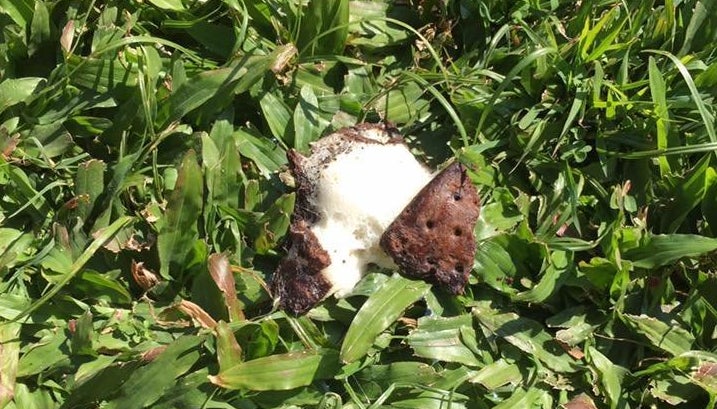If you’ve ever noticed your store-bought ice cream sandwich has a freakish ability to withstand heat without melting, you’re not alone.
One Australian woman just made headlines after posting about an ice cream sandwich that appeared mostly unmelted despite being left outside in nearly 80-degree heat for an entire weekend, Time reports. On Monday, Mary Salter of New South Wales shared a photo of half of an ice cream sandwich from the Australian grocery chain Coles. She said her grandson threw the treat on the lawn on Friday after it broke into two pieces, and amazingly, the ice cream kept its shape.
“Now I am a little concerned just WHAT is in this ‘treat,’” she wrote on Coles’ Facebook page, adding, “I am interested in your reply Coles!!”

Salter’s experience follows a viral story from 2014, when a Cincinnati mom discovered Walmart’s ice cream sandwiches don’t seem to melt, either. According to Coles, added thickeners are the reason its sandwich maintained a structured appearance.
“Our ice cream sandwiches make use of very simple, commonly-used food techniques that help slow the melting process,” a spokesperson told HuffPost. ”...This technique includes adding thickener to the cream, creating a honeycomb-like structure which helps to slow the melting process. When the product starts to melt and liquid evaporates, you are left with what appears as foam.”
Indeed, some companies use gums and other ingredients like mono- and diglycerides in their ice cream to slow melting, according to a 2014 video from Consumer Reports. Known as thickeners or stabilizers and emulsifiers, ingredients like these can also help prevent ice crystals from forming on treats while they’re in the freezer. The result is ice cream with a foamy, gummy feel instead of a “clean” melt on the tongue, plus an aversion to melting overall. See how five well-known U.S. brands of ice cream sandwiches fared in 100-degree heat when tested by Consumer Reports:
An ice cream’s water and cream levels may also alter its melt rate: More cream, aka fat, typically causes ice cream to melt more quickly, the Washington Post reported in 2009.
But additives like stabilizers and emulsifiers are much more important in helping ice cream keep its shape on hot days, said David Everett, director of the Dairy Innovation Institute at California Polytechnic State University. Some companies that make less expensive or lower fat ice creams tend to whip more air into their products to cut costs. Stabilizers help keep this air within the ice cream structure, building “a network of molecules that keep the ice cream intact,” Everett said.
Emulsifiers, meanwhile, help fat molecules clump together, “thus maintaining the air cells and causing the ice cream to maintain some of its shape when it melts,” he added. This could explain why ice creams that have higher fat content and lots of air keep their shape.
It also explains how your ice cream sandwich can technically melt, but not “look melted” at all. Ick.
Walmart vaguely cited the cream content of its ice cream sandwiches when it responded to headlines in 2014, but shortly explained its sandwiches contain stabilizers, too. Ingredients for Walmart’s ice cream sandwiches include mono- and diglycerides, guar gum, carob bean gum and cellulose gum, which help explain its ability to hold shape. Coles doesn’t list its sandwiches’ ingredients online, and didn’t respond to an inquiry from HuffPost.
Other processed foods also contain stabilizers and emulsifiers, which the Food and Drug Administration approves for use as additives, Consumer Reports points out. If you prefer ice cream without these additional ingredients, try making your own instead.
